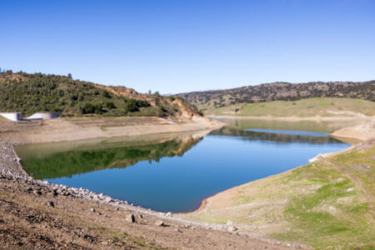Major California Reservoir To Be Drained Due To Earthquake Risk


In one of the most source water stressed regions of the country, the threat of natural disaster has dealt an unusual and devastating blow to supplies.
“In a dramatic decision that could significantly impact Silicon Valley’s water supply, federal dam regulators have ordered Anderson Reservoir, the largest reservoir in Santa Clara County, to be completely drained starting Oct. 1.,” The Mercury News reported. “The 240-foot earthen dam, built in 1950 and located east of Highway 101 between Morgan Hill and San Jose, poses too great of a risk of collapse during a major earthquake, the Federal Energy Regulatory Commission, which regulates dams, has concluded.”
The reservoir holds trillions of gallons of water, more than nine others owned by the district, and Santa Clara Valley consists of more than two million drinking water customers. But the damage that could be caused if an earthquake compromised the dam necessitated the decision, according to officials.
“An animated video produced by Valley Water shows a worst case scenario if the dam were damaged by a major earthquake and if the area had torrential rainfall,” ABC 7 reported. “Engineers project downtown Morgan Hill would be under 35 feet of water. Coyote Creek would flood, channeling runoff 30 miles to San Francisco Bay, putting downtown San Jose under eight feet of water.”
But the decision could not have been made lightly. Like the rest of California, Santa Clara County struggles to maintain drinking water supplies with a growing population and the prevalence of climate-caused drought. Following announcement of the decision to drain the reservoir, officials noted the obstacles.
“With these new requirements, we expect to see an impact to groundwater basins that are replenished with water released from Anderson Reservoir, including South County and southern San Jose,” said Norma Camacho, Santa Clara Valley Water District’s CEO, per The Mercury News. “Staff is already exploring other sources of water that will have to come from outside of the county. While residents have done an excellent job of conserving water since 2013, another drought during this time frame could require everyone to significantly decrease their water use.”
Following a pervasive drought from 2012 to 2017, the district’s consumers use 21 percent less water now than they did eight years ago. That conservation will be critical as the area works to overcome this latest source water obstacle.
To read more about how drinking water utilities deal with strains on supply, visit Water Online’s Source Water Scarcity Solutions Center.
